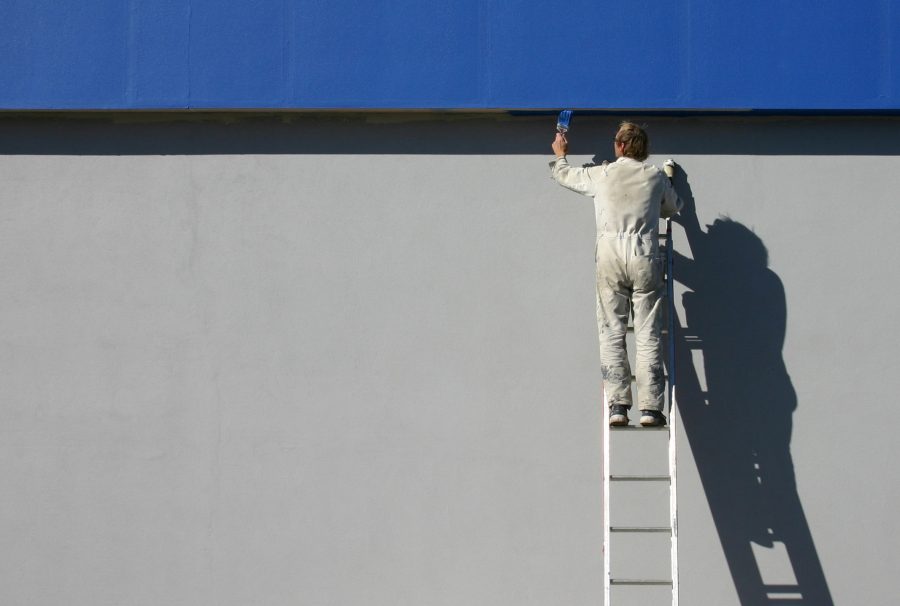What does practically every commercial building have in common? Paint. All too often, however, problems may develop with the paint due to extreme conditions, which then compromise its lifespan.
Here are some ways to protect your paint against extreme conditions:
Waterproofing
Waterproofing contractors often encounter repair projects wherein the damage could have been prevented had the necessary precautions been taken in advance. Furthermore, the severity of damage could have been lesser had immediate intervention been initiated.
Damage occurs when dampness seeps into areas of the property and stays there for long periods of time. The entry of moisture into building areas can come from any of the following sources:
- Building materials, such as porous surfaces
- Cracks and fissures
- Poorly-sealed
- Humidity
- Roof leaks
- Damage to the drainage system
- Poor management of fountains, man-made lakes and pools
- Groundwater run-off
Combating water damage
To protect concrete surfaces from seepage, waterproofing contractors use elastomeric coating. Elastomerics are among the most frequently used types of coatings for commercial and industrial applications. These rubberized coatings have strong water-resistant properties, which make them flexible enough to allow trapped moisture to escape the building’s structure without affecting the adhesion of the coating.
See here for more information: Elastomeric coating
For already-waterlogged surfaces, surfaces are waterproofed with the use of vinyl or resin coatings, to seal the surface. Other treatments involve the use of materials that sink into the surface to ward off any future water penetration.
The best solution to water damage problems in the property, however, is the hiring of skilled professionals to provide the most effective solution and prevention of moisture-wrought deteriorations.
Waterproofing contractors come up with well-planned treatment for any permeation already in progress, and provide good preventive maintenance solutions for the property’s long-term protection.
Corrosion control
The primary goal of corrosion control is to seal the structural substrate in a protective coating that keeps out damaging elements. To this end, many industrial painting contractors prefer to use epoxy coatings in corrosion control solutions.
Two-part epoxy coatings have superior adhesion properties, making them ideal for most industrial substrates, including steel, concrete, cement, drywall, and masonry. These coatings are virtually impermeable against water, heat, and chemicals. Epoxy coatings form a durable, bonded shell that protects your industrial facility from the elements.
When properly applied with the right surface preparation and attention to mixtures and drying times, epoxy coatings will continue to preserve your investment for years—while maintaining a high level of aesthetic appeal. A top coat of UV protective polyurethane is also recommended to protect the epoxy coating from UV damage that could break down the coating. As a secondary benefit, it also helps maintain the color of the epoxy.
See here for more information: Polyurethane and UV protection coating
Insulate against condensation
Condensation is a constant nuisance in any facility or mechanical setting where there is a situation in which humidity is drawn from the air and collects on the surface of materials in place. This will happen when the material’s temperature is below the environment’s dew point.
The most common method to prevent this occurring is to insulate the materials, thus providing less of a differential between temperature and dew point. This works well as long as the materials remain sealed and intact.
Coatings manufacturers have been exploring the use of silica aerogel as an additive to paint. The properties of silica make it an effective insulating material. When added to paint it can increase the insulating value (reducing the thermal conductive properties) significantly.
By creating coatings that increase the thermal insulating properties of a surface, several advantages may be gained. As noted, reducing surface temperature reduces the occurrence of condensation. That means that the attendant problems of corrosion and mold are also reduced.
Get started properly by painting in the right weather conditions
- It is best to avoid painting in direct sunlight or on a hot day
- If you are painting with an oil-based paint, the ambient temperature should be above 45°F or 7°C for at least 48 hours. Latex and acrylic paints typically require higher temperatures above 50°F or 10°C. Some paints, however, are formulated to dry at lower temperatures, even as low as 35°F or 2°C.
- You can apply latex paints just 30 minutes after it rains, assuming that the surface is not visibly wet. (If you are applying oil-based paints, you should wait until the surface is completely dry.)
- Avoid painting in windy weather. Even light wind can cause latex paint to dry too quickly, resulting in inadequate film formation. Moreover, wind can stir up dust and other contaminants that can ruin your paint job.
Commercial Painting California
Protect your paint against extreme conditions with the help of the expert team of experienced painting contractors at Raider Painting.


